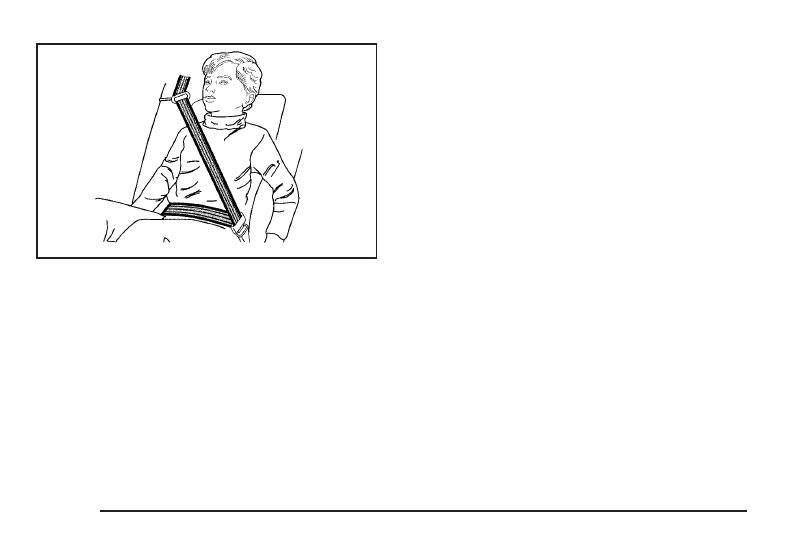Pontiac Grand Prix (2005 year). Instruction - part 3

4. Buckle, position and release the safety belt as
described in Rear Seat Passengers on page 1-23.
Make sure that the shoulder belt crosses the
shoulder.
To remove and store the comfort guides, squeeze the
belt edges together so that you can take them out of
the guides. Pull the guide upward to expose its storage
clip, and then slide the guide onto the clip. Turn the
guide and clip inward and in between the seatback and
the interior body, leaving only the loop of the elastic
cord exposed.
Safety Belt Pretensioners
Your vehicle has safety belt pretensioners. They are
on the buckle end of the safety belts for the driver
and right front passenger. They help the safety belts
reduce a person’s forward movement in a moderate to
severe frontal and near frontal crash.
Pretensioners work only once. If they activate in a
crash, you will need to get new ones, and probably other
new parts for your safety belt system. See Replacing
Restraint System Parts After a Crash on page 1-57.
Safety Belt Extender
If the vehicle’s safety belt will fasten around you,
you should use it.
But if a safety belt is not long enough, your dealer will
order you an extender. It is free. When you go in to
order it, take the heaviest coat you will wear, so
the extender will be long enough for you. To help avoid
personal injury, do not let someone else use it, and
use it only for the seat it is made to fit. The extender has
been designed for adults. Never use it for securing
child seats. To wear it, just attach it to the regular safety
belt. For more information, see the instruction sheet
that comes with the extender.
1-28